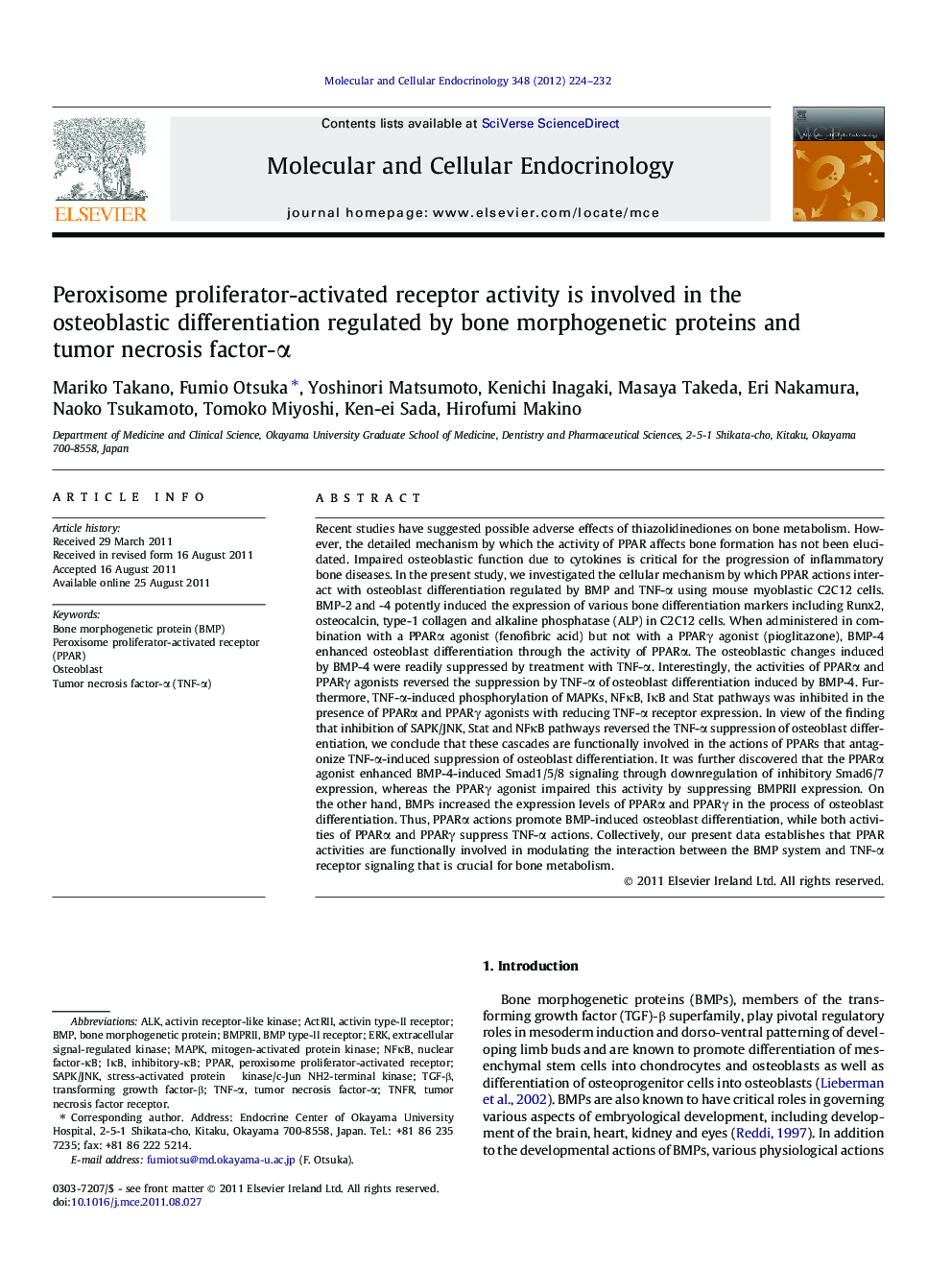| کد مقاله | کد نشریه | سال انتشار | مقاله انگلیسی | نسخه تمام متن |
|---|---|---|---|---|
| 2196518 | 1098828 | 2012 | 9 صفحه PDF | دانلود رایگان |

Recent studies have suggested possible adverse effects of thiazolidinediones on bone metabolism. However, the detailed mechanism by which the activity of PPAR affects bone formation has not been elucidated. Impaired osteoblastic function due to cytokines is critical for the progression of inflammatory bone diseases. In the present study, we investigated the cellular mechanism by which PPAR actions interact with osteoblast differentiation regulated by BMP and TNF-α using mouse myoblastic C2C12 cells. BMP-2 and -4 potently induced the expression of various bone differentiation markers including Runx2, osteocalcin, type-1 collagen and alkaline phosphatase (ALP) in C2C12 cells. When administered in combination with a PPARα agonist (fenofibric acid) but not with a PPARγ agonist (pioglitazone), BMP-4 enhanced osteoblast differentiation through the activity of PPARα. The osteoblastic changes induced by BMP-4 were readily suppressed by treatment with TNF-α. Interestingly, the activities of PPARα and PPARγ agonists reversed the suppression by TNF-α of osteoblast differentiation induced by BMP-4. Furthermore, TNF-α-induced phosphorylation of MAPKs, NFκB, IκB and Stat pathways was inhibited in the presence of PPARα and PPARγ agonists with reducing TNF-α receptor expression. In view of the finding that inhibition of SAPK/JNK, Stat and NFκB pathways reversed the TNF-α suppression of osteoblast differentiation, we conclude that these cascades are functionally involved in the actions of PPARs that antagonize TNF-α-induced suppression of osteoblast differentiation. It was further discovered that the PPARα agonist enhanced BMP-4-induced Smad1/5/8 signaling through downregulation of inhibitory Smad6/7 expression, whereas the PPARγ agonist impaired this activity by suppressing BMPRII expression. On the other hand, BMPs increased the expression levels of PPARα and PPARγ in the process of osteoblast differentiation. Thus, PPARα actions promote BMP-induced osteoblast differentiation, while both activities of PPARα and PPARγ suppress TNF-α actions. Collectively, our present data establishes that PPAR activities are functionally involved in modulating the interaction between the BMP system and TNF-α receptor signaling that is crucial for bone metabolism.
► PPARs modulate the interaction of BMP and TNF-α signaling in C2C12 cells.
► PPARα activity enhances BMP-4-induced osteoblast differentiation by reducing Smad6/7 expression.
► PPARγ agonist suppresses BMPRII expression, leading to impairment of Smad1/5/8 signaling.
► PPARs reverse TNF-α inhibition of osteoblast differentiation by suppressing TNFR signaling including JNK, NFκB and Stat.
Journal: Molecular and Cellular Endocrinology - Volume 348, Issue 1, 2 January 2012, Pages 224–232